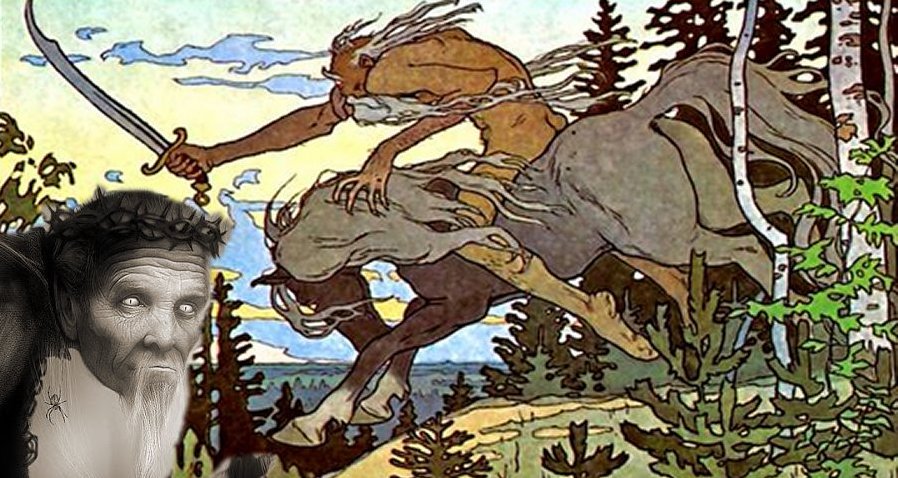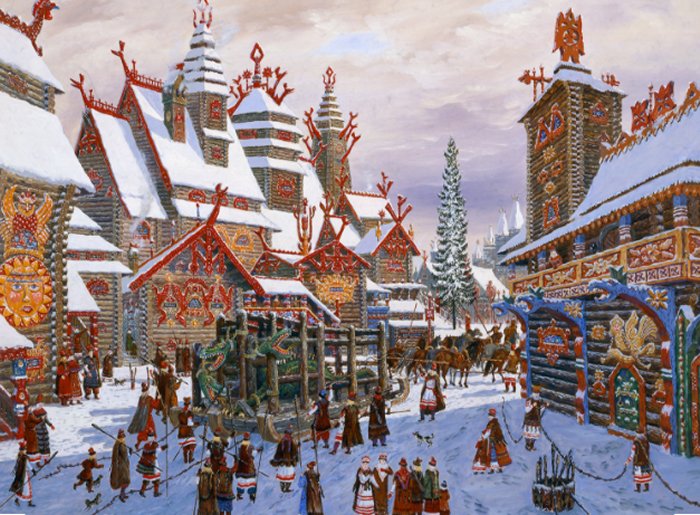Sacred Hidden Buyan Island And The Mysterious Alatyr Stone With Healing Powers May Have Existed
Ellen Lloyd - AncientPages.com - Does the sacred hidden island of Buyan exist in another reality invisible to our naked eye? Some legends tell the magical island is invisible, but other stories reveal it can disappear or appear when approached. There is also an opinion that the island of Buyan is real and can be found on all modern maps.
The legendary island of Buyan by Ivan Bilibin. Credit: Public Domain
As we investigate the legend of Buyan, we find something surprising that explains some parts of its beautiful legend. Still, far from all, and in the end, we are left with unanswered questions that keep our curiosity alive.
Buyan Island – Home To Slavic Gods And Incredible Mythological Creatures
We encounter tales about Buyan in Slavic mythology. Buyan, sometimes referred to as the Slavic Atlantis is sacred because it is home to the Sun and the three brothers, the North Wind, the East Wind, and the West Wind. It’s a remarkable place located somewhere in the ocean.
It is also the dwelling place of the Zoryas, two guardian goddesses, known as the Auroras. In Slavic mythology, the Zoryas represent the Morning Star and the Evening Star.
Koshchey is always portrayed as an elder who is hunched over, with a long beard and gray hair. At the same time, he is very strong physically and spiritually despite his weak-looking appearance.
Hidden somewhere on the island lives Koshchey, the immortal strong, and wise ruler of darkness. Koshchey cannot be killed unless somebody finds his soul, so he is clever enough to hide it.
From the Russian tale “The Frog Tsarevna,” we learn that “Koschei’s death is on the point of a needle, which is in an egg, inside a duck, which is in a hare, contained in a chest buried underneath a large oak tree at Island of Buyan.”
The Slavic oak tree represents the connection between Heaven and Earth like Yggdrasil in Norse mythology, the Ceiba Tree of Maya, and the Celtic Tree of Life.
The island of Buyan was created by the mighty sky god Perun, one of the most important Slavic deities. Perun, God of Heaven and Lightning, has a counterpart and enemy named Veles, and he is the God of Darkness and Underworld. Perun and Veles are always in conflict, and there is an eternal struggle between light and darkness.
Gagana Can Foretell The Future And Mysterious Alatyr Stone Has Healing Powers
The island of Buyan is believed to be the place where all weather in the world originates, created by the God Perun. A strange animal known as Indrik lives on the island. It has a bull’s body, a horse's head, a deer's legs, and a large horn. Indrik is responsible for the earthquakes on Earth, takes care of the water system, and protects other animals.
Credit: National Culture Revival Fund Russia
Very close to Buyan, we can also find the bird Gagana, a fabulous bird with a beak of iron and claws of copper. This unique creature can foretell future events. It has the face of a human and was born at the same time as our planet, meaning it knows our entire history. Unfortunately, the bird’s voice is difficult to understand, so humans cannot learn all secrets of the past and future. When Gagana flies across the skies, there is a storm on Earth.
On the island, there is also a precious alatyr stone that is always guarded by Gagana and Garafena, a magical snake. The pure white alatyr stone can heal, and grant eternal happiness and youth.
Where Is The Island Of Buyan Really Located?
The location of Buyan is open to debate, but many have suggested that Buyan is the island of Rügen. Is the island of Buyan merely a myth, or has anyone ever seen this mysterious place that appears and disappears at certain times? Have we mistaken the magical island for a real place?
Credit: National Culture Revival Fund Russia
From the 7th to the 12th century, Rügen was the principal center of the Slavonic and Wendish worship. Readers of Ancient Pages may remember that among the numerous deities of the Slavic peoples of central Europe, the most prominent place was occupied by Svantevit, the war god also known as (Svetovit, Sventovit).
Svantevit was depicted with four necks and four heads, two of them facing in front and two behind. Multiple heads were the most important feature of the Slavic pantheon of gods. It is believed that Svantevit may also have been worshipped as a supreme deity and seen as a father to other gods. The center of his worship was in Arkona (Arcona) – the ancient temple of the Slavs built on a high rocky shore of the Baltic island of Rügen, Germany.
In 1168, King Valdemar I of Denmark destroyed the Rügen’s Slavic worship site, but there are still ancient ruins on the island that remind people of the Pagan god who once played an essential role to their ancestors.
Was Buyan the island of Rügen? Credit: Slavorum.org
So, yes, it’s possible that Buyan was the island of Rügen, but how do we explain all the other elements of the legend, such as the mysterious alatyr stone and all the remarkable animals with supernatural powers that lived on the island? Are these stories simply products of peoples’ imagination or something else we cannot explain?
The story of Buyan is very similar to the legend of Brigadoon, a hidden village somewhere in the Scottish Highlands that appears every hundred years for just one day, or the legend of Kitezh.
Kitezh and Brigadoon are invisible and can only be seen by some very rarely.
Stories of places that exist on the border to our visible reality can be found worldwide. Some may have been real, while others may be fictional places. Perhaps the beauty of the Buyan legend lies in the fact that we may never know the whole truth about this enigmatic island.
Updated on June 29, 2022
Written by Ellen Lloyd – AncientPages.com
Copyright © AncientPages.com All rights reserved. This material may not be published, broadcast, rewritten or redistributed in whole or part without the express written permission of AncientPages.com
Expand for referencesMore From Ancient Pages
-
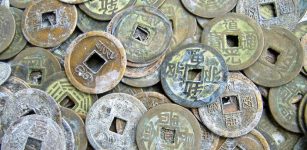 Our Lives Have Always Been Manipulated By Money – Part 1
Featured Stories | Jun 2, 2022
Our Lives Have Always Been Manipulated By Money – Part 1
Featured Stories | Jun 2, 2022 -
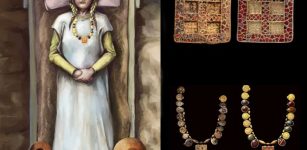 Mystery Of The Anglo-Saxon Harpole Burial Continues – New Clues
Archaeology | Dec 14, 2023
Mystery Of The Anglo-Saxon Harpole Burial Continues – New Clues
Archaeology | Dec 14, 2023 -
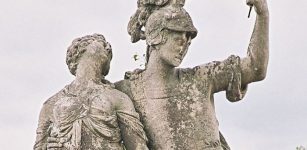 Tyrannical Tarquin The Proud: The Seventh And Last King Of Rome Was Banished
Featured Stories | Jan 28, 2020
Tyrannical Tarquin The Proud: The Seventh And Last King Of Rome Was Banished
Featured Stories | Jan 28, 2020 -
 How Norwegians Expressed Resistance Against Nazi Occupation Using Christmas Cards
Featured Stories | Dec 21, 2023
How Norwegians Expressed Resistance Against Nazi Occupation Using Christmas Cards
Featured Stories | Dec 21, 2023 -
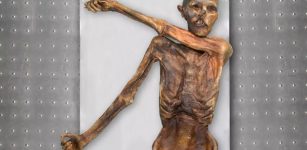 Ötzi Had Dark Skin, Bald Head And Anatolian Ancestry- DNA Reveals
Evolution | Aug 16, 2023
Ötzi Had Dark Skin, Bald Head And Anatolian Ancestry- DNA Reveals
Evolution | Aug 16, 2023 -
 Medieval Sword Found In The Sea Off The Carmel Coast Was Probably Used In Combat 800 Years Ago
News | Aug 4, 2023
Medieval Sword Found In The Sea Off The Carmel Coast Was Probably Used In Combat 800 Years Ago
News | Aug 4, 2023 -
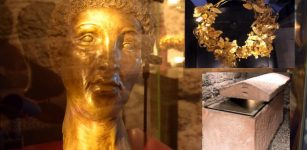 Carian Princess’ Tomb, Golden Artifacts – Now On Display In Renovated Hall Of Bodrum Castle
Artifacts | Aug 27, 2020
Carian Princess’ Tomb, Golden Artifacts – Now On Display In Renovated Hall Of Bodrum Castle
Artifacts | Aug 27, 2020 -
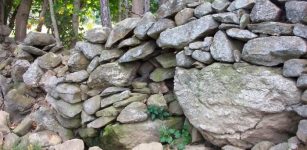 New England’s Abandoned Stone Walls Deserve A Science Of Their Own
Featured Stories | Jan 5, 2024
New England’s Abandoned Stone Walls Deserve A Science Of Their Own
Featured Stories | Jan 5, 2024 -
 Large Pre-Columbian Pyramid Discovered Under Highway In Mexico But It Will Not Be Excavated
Archaeology | Dec 16, 2024
Large Pre-Columbian Pyramid Discovered Under Highway In Mexico But It Will Not Be Excavated
Archaeology | Dec 16, 2024 -
 The Brujo De Chiloé – The Wild Warlocks Of The Chiloé Archipelago
Featured Stories | May 4, 2022
The Brujo De Chiloé – The Wild Warlocks Of The Chiloé Archipelago
Featured Stories | May 4, 2022 -
 On This Day In History: Russian Writer, Poet, Critic Nikolay Gogol Died – On Mar 4, 1852
News | Mar 4, 2017
On This Day In History: Russian Writer, Poet, Critic Nikolay Gogol Died – On Mar 4, 1852
News | Mar 4, 2017 -
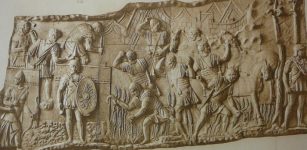 Secret Police In Ancient Rome – Frumentarii: Who Were They And What Was Their Role?
Featured Stories | Aug 12, 2019
Secret Police In Ancient Rome – Frumentarii: Who Were They And What Was Their Role?
Featured Stories | Aug 12, 2019 -
 Ancient History Of The Christmas Tree And Its Pagan Roots – How The ‘Forbidden’ Tree Survived Against All Odds
Christmas Traditions | Dec 24, 2024
Ancient History Of The Christmas Tree And Its Pagan Roots – How The ‘Forbidden’ Tree Survived Against All Odds
Christmas Traditions | Dec 24, 2024 -
 Unusual Skeletons And Mysterious Ancient Artifacts Covered With Unknown Characters Discovered In West Virginia By Archaeologists
Featured Stories | Feb 22, 2024
Unusual Skeletons And Mysterious Ancient Artifacts Covered With Unknown Characters Discovered In West Virginia By Archaeologists
Featured Stories | Feb 22, 2024 -
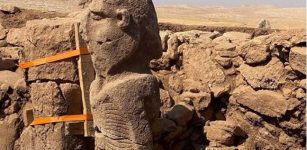 World’s Oldest Human Statue Discovered At Karahan Tepe, Turkey
Archaeology | Oct 30, 2023
World’s Oldest Human Statue Discovered At Karahan Tepe, Turkey
Archaeology | Oct 30, 2023 -
 Extraordinary Discovery Of First Viking Tower In Viborg, Denmark Re-Writes Viking History
Archaeology | Jan 30, 2017
Extraordinary Discovery Of First Viking Tower In Viborg, Denmark Re-Writes Viking History
Archaeology | Jan 30, 2017 -
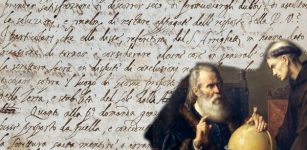 Galileo Galilei’ Long-Lost Letter Reveals His Attempt To Fool The Inquisition And Make Science Independent From Religion
Archaeology | Sep 22, 2018
Galileo Galilei’ Long-Lost Letter Reveals His Attempt To Fool The Inquisition And Make Science Independent From Religion
Archaeology | Sep 22, 2018 -
 The Untold Story Of The Inca – Fire In The Sky – Part 1
Ancient Mysteries | Jul 2, 2019
The Untold Story Of The Inca – Fire In The Sky – Part 1
Ancient Mysteries | Jul 2, 2019 -
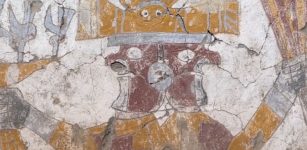 Ancient Murals Of Mysterious Two-Faced Beings And Supernatural Creatures At Pañamarca, Peru
Archaeology | Mar 21, 2023
Ancient Murals Of Mysterious Two-Faced Beings And Supernatural Creatures At Pañamarca, Peru
Archaeology | Mar 21, 2023 -
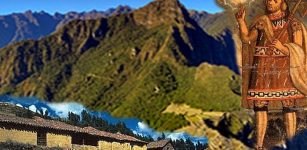 Manco Capac: Legendary Founder Of The Inca Dynasty Of Peru
Featured Stories | Jun 19, 2016
Manco Capac: Legendary Founder Of The Inca Dynasty Of Peru
Featured Stories | Jun 19, 2016


